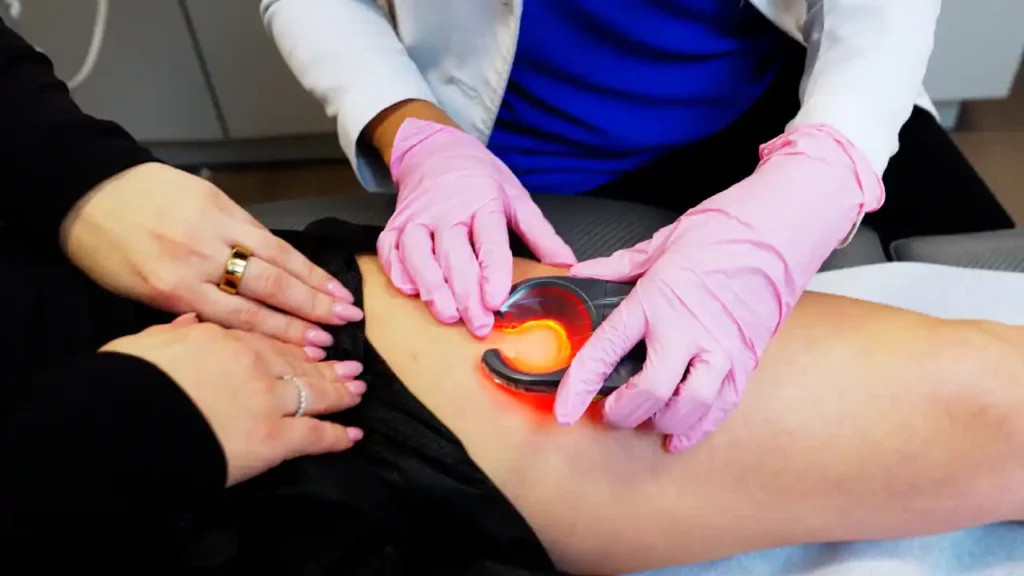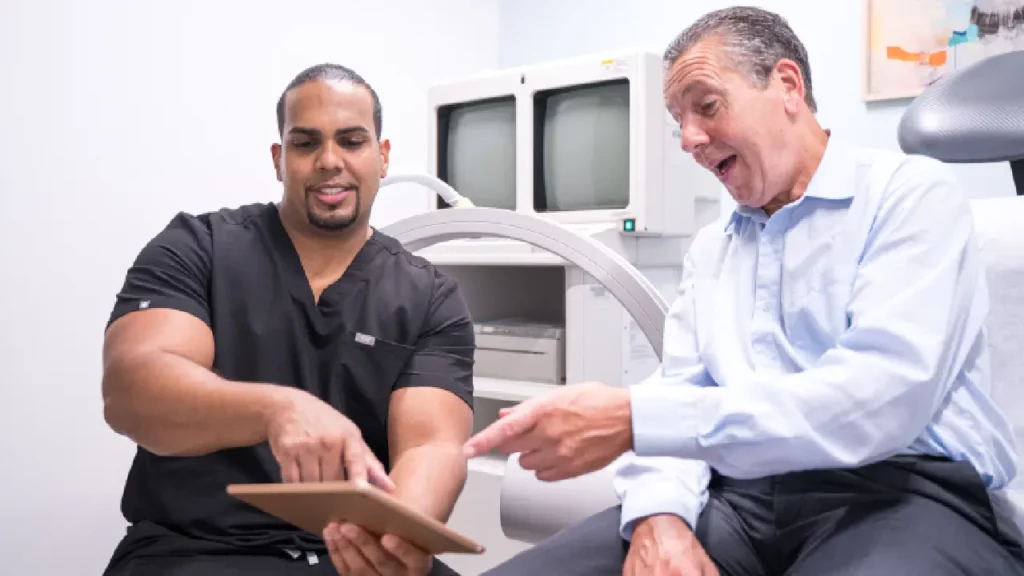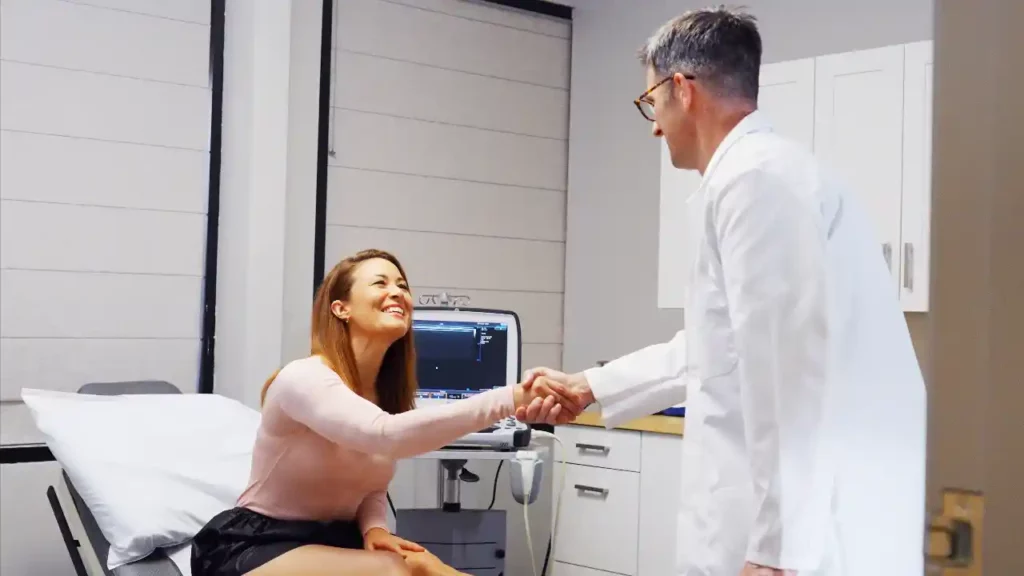This is the Most Popular Spider Vein Treatment!
Spider veins are one of the most common cosmetic concerns, particularly for people who spend long hours on their feet. They appear as small, twisted, and dilated blood vessels near the skin’s surface, often on the legs. If you’ve been considering ways to treat spider veins, one of the most popular treatments for spider veins is sclerotherapy. This treatment has earned widespread acclaim due to its effectiveness, affordability, and non-invasive nature.
At Vein Treatment, we specialize in the most advanced, minimally invasive treatments for spider veins, including sclerotherapy. If you’re looking for a way to improve the appearance of your legs and treat your spider veins, understanding how sclerotherapy works will help you make an informed decision. Read on to discover why sclerotherapy could be the perfect solution for you!
How Does Sclerotherapy Treat Spider Veins?
Sclerotherapy is the gold standard for spider veins treatment and is widely regarded as the most effective way to get rid of spider veins on legs. But how exactly does this treatment work?
At its core, sclerotherapy involves injecting a special solution, called a sclerosant, directly into the affected veins. This solution irritates the walls of the vein, causing them to collapse and seal shut. Once the vein is closed off, blood flow is redirected to healthier veins, and the treated vein eventually fades from view, being reabsorbed by the body. It’s a quick, minimally invasive procedure that doesn’t require any surgery or long recovery times. Most people can return to their normal activities almost immediately after the treatment.
Why Sclerotherapy is the Most Popular Spider Vein Treatment
Minimally Invasive with Quick Recovery Time
One of the reasons sclerotherapy is the most popular spider veins treatment is because it is minimally invasive. Unlike surgical options that may require incisions or stitches, sclerotherapy involves tiny injections, meaning there’s no need for cutting or stitches. The procedure is usually completed in under 30 minutes, and patients can return to their regular activities immediately.
Effective Results
Sclerotherapy is highly effective at treating spider veins. Most patients experience a noticeable reduction or complete disappearance of spider veins after one or two treatments. The sclerosant solution works by shutting down the spider vein, causing it to fade away gradually. Most patients see excellent results and are satisfied with the overall outcome.
Safe and Well-Tolerated
Another reason sclerotherapy is so popular is that it is a safe and well-tolerated spider vein treatment. Serious complications are rare, and most patients experience only mild side effects, such as slight redness, swelling, or bruising at the injection site. These side effects are temporary and usually resolve within a few days to weeks.
No Need for Anesthesia
Since sclerotherapy is minimally invasive, it doesn’t require general anesthesia, so it eliminates the risks and recovery time associated with anesthesia. In most cases, a local anesthetic is not even necessary, making it a more comfortable option for people looking for a hassle-free way to address their spider veins and then resume daily activities.
Sclerotherapy Isn’t the Only Spider Vein Treatment
While sclerotherapy is an excellent option for treating visible spider veins, it’s important to remember that spider veins are often a sign of underlying venous insufficiency. This condition, where veins in your legs are unable to return blood to your heart, can lead to both spider veins and varicose veins. Though sclerotherapy treats the visible spider veins, it doesn’t address the root cause of the problem or the accompanying varicose veins. In such cases, sclerotherapy may have to be performed after other minimally invasive vein treatments.
Endovenous Laser Ablation (EVLA)
Endovenous Laser Ablation (EVLA) is another minimally invasive treatment that can be used to treat larger veins, such as varicose veins, which are often present alongside spider veins. EVLA works by using laser energy to close off problematic veins. A laser fiber is inserted into the vein through a small incision, and as the laser is activated, it heats the vein, causing it to collapse. The body then naturally reroutes blood to healthier veins.
Radiofrequency Ablation (RFA)
Radiofrequency Ablation (RFA) is similar to EVLA, but it uses radiofrequency energy instead of laser energy to treat larger veins. Like EVLA, RFA is highly effective at closing off malfunctioning veins and is minimally invasive. It’s especially useful for treating veins deeper within the leg that might not be amenable to sclerotherapy.
VenaSeal
VenaSeal is a newer treatment for venous insufficiency that uses a medical adhesive to seal off damaged veins. This approach is unique because it doesn’t require heat, making it less invasive than laser or radiofrequency treatments. It’s especially beneficial for patients who want to avoid using a local anesthetic.
ClariVein
ClariVein is another minimally invasive treatment for venous insufficiency that uses mechanical and chemical energy to treat larger veins. A small catheter is inserted into the vein, and as it moves along the vein, it delivers the sclerosant solution to the affected area. This treatment offers the same benefits as sclerotherapy but is meant for larger veins.
Why Early Spider Vein Treatment is Crucial
When it comes to spider veins, addressing the problem early can prevent further complications. The longer you wait, the more likely it is that your veins could worsen, leading to other issues such as varicose veins or venous ulcers. Additionally, the more advanced the vein disease becomes, the more difficult it may be to treat. By seeking spider vein treatment early, you’ll improve the cosmetic appearance of your legs and prevent further damage to your veins.
FAQs
What is the best treatment for spider veins on legs?
The best treatment for spider veins on legs is sclerotherapy, a minimally invasive procedure that involves injecting a solution into the vein to close it off and make it disappear. It’s effective, quick, and safe, and it’s ideal for treating visible spider veins.
Can spider veins go away?
Can spider veins go away? No, spider veins can’t go away on their own, but they can go away with proper treatment, and sclerotherapy is the most effective way to eliminate them. This treatment involves injecting a solution into the veins, causing them to collapse and fade.
How to get rid of spider veins on legs?
How to get rid of spider veins on legs? The most effective way to get rid of spider veins on legs is through sclerotherapy. This involves injecting a solution into the veins, causing them to close and disappear. Treatments like EVLA, RFA, or VenaSeal might be recommended for other vein conditions. Visit your nearest vein clinic to explore your spider vein treatment options.
How to treat spider veins?
How to treat spider veins? Spider veins can be treated using minimally invasive procedures such as sclerotherapy, laser ablation, or other vein treatments. Each treatment targets the veins to close them and improve the appearance of your legs.
By seeking early spider vein treatment, such as sclerotherapy, you can prevent spider veins from worsening and enjoy healthier, more beautiful legs. We have state-of-the-art vein treatment clinics across New York, New Jersey, Maryland, and California—you can visit your nearest vein treatment clinic for more information. Contact us to verify your insurance details or schedule a consultation and take the first step toward better vein health!









